And Into the Sea. Goes Pretty England and Me.
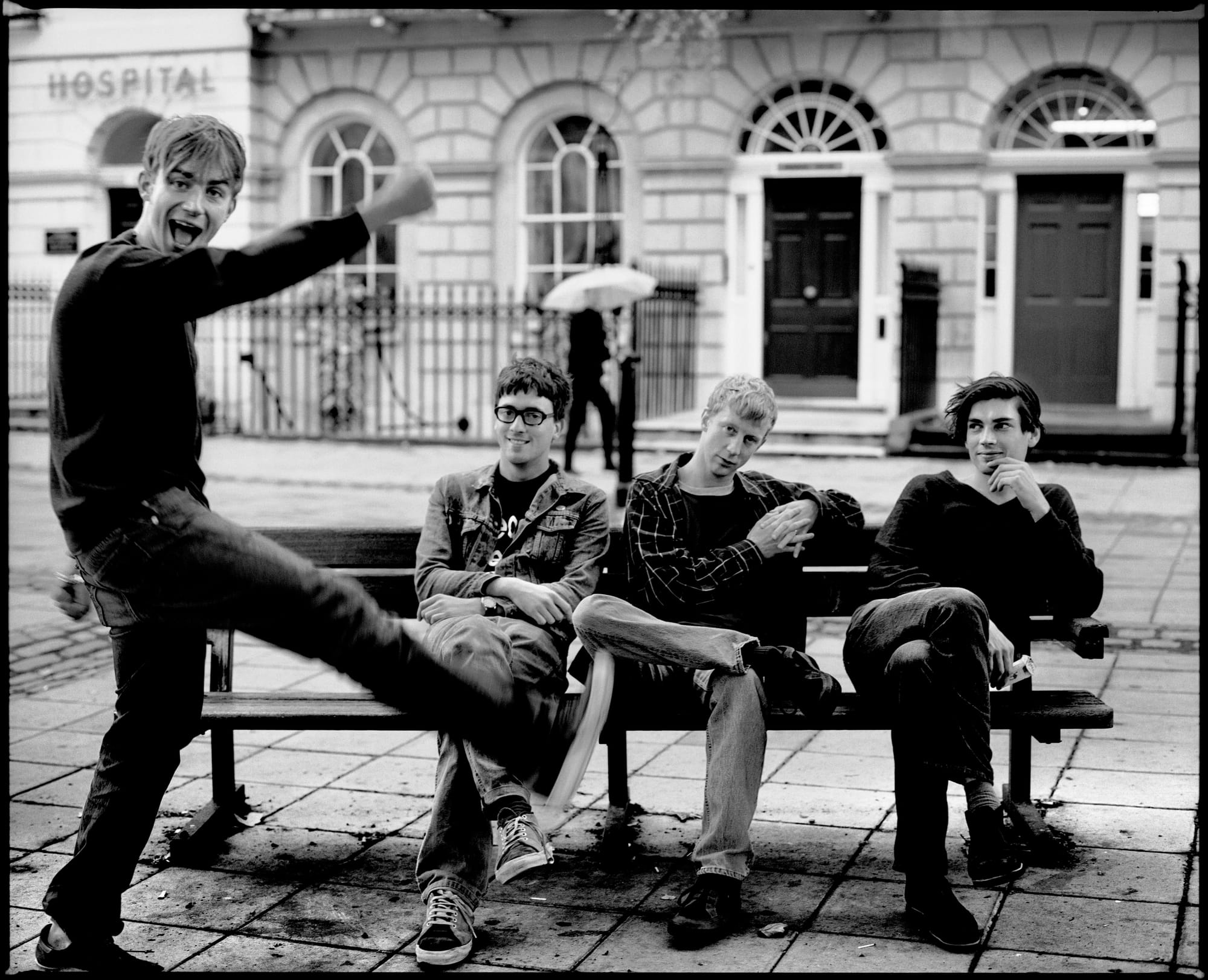
Blur are a band that has been a part of my record collection for a very long time, and for a while, they were on the fringes. However, in these last 12 months, I have come to love the band. They are one of the very best bands of the 90s and one of Britain's most important bands ever. With four extraordinary musicians, Damon Albarn, Graham Coxon, Alex James and Dave Rowntree.
This is their story.
She's So High- The Start
Blur was formed at the back end of 1988 when Alex James joined Damon Albarn's band 'Circus'. James was studying at Goldsmiths College in London and had become friends with Graham Coxon, who would introduce James to Albarn. Dave Rowntree had joined the band a few months previously, creating the lineup we now know as Blur and what the world knew then as 'Circus' and 'Seymour'
The group performed live for the first time in summer 1989 in the goods shed of the East Anglian Railway Museum at Chappel & Wakes Colne. It was not long before they were attracting the attention of A&R representatives. In November of 1989, Andy Ross of 'Food Records' attended a Blur gig and managed to convince the band to sign with Food. It all seemed to be perfect, apart from one small detail, the band name. A list of alternatives was drawn up by the label, and the band decided on Blur. Signing them officially in March 1990.
Newly christened, Blur, the band took to the road supporting the Cramps on a UK tour. Where they could road-test new songs, including the debut single 'She's So High', which was released in October 1990 and hit Number 48 on the UK Singles Chart. A follow-up was needed, and after initially struggling, the band began to work with Stephen Street, famed for his work with The Smiths and later Morrissey.
The first result of this now prolific partnership was the single 'There's No Other Way', which was an instant hit and peaked at Number 8 in the UK Singles Chart. The song took inspiration from the 'Baggy' movement in the UK at the time, a true indie and dance crossover.
Blur's potential was there from the start; they had hit the Top 10 with only their second single. A third single, 'Bang', followed, and it was not as well received, peaking at Number 24. However, this did not deter the band, and they pushed on with the guidance of Food Records bosses Andy Ross and David Balfe to record an album which drew influences from the Baggy and Madchester genres.
Blur, however, wanted to explore different ideas, but were limited as Damon often had to write in the studio. 'Leisure', the band's debut released in 1991, is a real mixed bag; there are some classic Blur songs on that record, including 'Sing' and 'There's No Other Way'. Ultimately, though, it is the sound of a band finding its feet.

After discovering that the band were deep in debt, Blur hit the road, not around the UK or Europe, but across the Atlantic. They were headed for the United States. To coincide with the tour, the band released ‘Popscene’, a single that marked the first glimpse of a new direction: an unapologetically British sound, bursting with 1960s-inspired hooks and brassy, swaggering horns.
Yet, ‘Popscene’ failed to make an impact on the charts. Grunge was dominating the airwaves, and Nirvana ruled supreme. Blur’s brand of sharp, distinctly English guitar pop seemed out of step with what listeners wanted. The lukewarm reception forced the band to delay plans for their second album.
The ensuing two-month American tour was gruelling. The band grew increasingly disillusioned and homesick, often turning their frustrations on each other. Tensions ran high, and several arguments escalated into full-blown fights. They missed England, the culture, the humour, even the weather. Damon Albarn, especially, began writing songs steeped in British character, drawing inspiration from bands like The Kinks, Madness, and The Jam.
The 44-date tour of the United States left Blur in "complete disarray", according to writer David Cavanagh. Dismayed by American audiences' infatuation with grunge and the lacklustre response to their music, the group frequently drank, and members often broke into fist-fights with one another. Homesick, the tour "instilled in the band a contempt for everything American", Cavanagh later wrote; frontman Damon Albarn, who "started to miss really simple things [about England]", listened to a tape of the English pop group the Kinks throughout the tour. He later stated the only pleasant memory he had of the tour was his time spent listening to the Kinks' 1967 single 'Waterloo Sunset'
By 1992, things looked bleak. Blur were still struggling financially, and after a particularly poor gig, one that shared a bill with the rising band Suede, they found themselves on the brink of being dropped by their label. However, Food Records gave them one more chance, albeit reluctantly, allowing them to record a second album. The label remained sceptical of Blur’s new direction, but the band were determined to prove themselves.
For Tomorrow- Britpop Begins
I mentioned Suede earlier, and while Blur were touring America, Suede had begun to find real success back home. You could say Blur were spurred on by this… or perhaps irritated. Probably both. The rivalry between the two bands, though understated at first, would soon come to define a new musical era.
After some unsuccessful recording sessions with Andy Partridge of XTC fame, Blur regrouped and returned to the studio with Stephen Street, the producer who had helped shape their debut. This time, they had a clearer vision and something to prove.
Damon Albarn, in particular, was fiercely driven. “Suede and America fuelled my desire to prove to everyone that Blur was worth it. There was nothing more important in my life,” he later reflected. Albarn sensed that grunge’s dominance was beginning to fade and that a shift was coming. He wanted to lead that change. He believed that British pop, sharp, witty, and unmistakably homegrown, could rise again, even if their label wasn’t convinced.
Following the unsuccessful sessions with Partridge and after a chance reunion with Stephen Street, it was decided he'd take the producer's seat again.
For this album, the band went for a completely different vision, incorporating influences from traditional British guitar-pop groups such as the Kinks and the Small Faces, and the resulting sound was melodic and lushly produced, featuring brass, woodwind and backing vocalists. Albarn's lyrics on 'Modern Life Is Rubbish' use "poignant humour and Ray Davies' characterisation to investigate the dreams, traditions and prejudices of suburban England", according to writer David Cavanagh.
'Modern Life is Rubbish', the band's second album, was completed in December 1992, and it's safe to say the record label wasn't massive fans. Balfe famously told the band that they were committing 'artistic suicide' Nonetheless, the band continued to push for the record, but the label rejected the album, originally urging the band to record a single. Albarn listened and on Christmas Day he wrote 'For Tomorrow'.
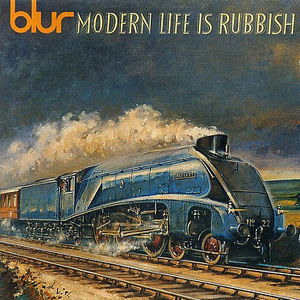
This album is vastly different from its predecessor, it was hugely influenced by traditional guitar pop, The Kinks, The Who, The Small Faces and The Jam, and see's the band adopted a variety of different styles 'Advert' for example punk song, whereas 'Chemical World' is psychedelic in places, musically this band were further ahead of the competition. A melodic, brass and string-filled masterpiece. In my opinion, this record is Blur's crowning jewel.
Modern Life Is Rubbish was a moderate chart success in the UK; the album peaked at number 15, while the singles taken from the album charted in the Top 30. Applauded by the music press, the album's Anglocentric rhetoric rejuvenated the group's fortunes after their post-Leisure slump. Modern Life Is Rubbish is regarded as one of the defining releases of the Britpop scene.
Deriving from "the biting humour of Ray Davies and the bitterness of Paul Weller, Albarn's lyrics on 'Modern Life Is Rubbish' are a social commentary and satire on contemporary suburban English life. A real two-fingers to America, and the antithesis to Grunge. This is the birth of Britpop. James later explained, "it was f***ing scary how American everything's becoming ... so the whole thing was a f***ing big two fingers up to America".
NME summarised the theme of the "thinly-veiled concept album" as a "London odyssey crammed full of strange commuters, peeping Thomases and lost dreams; of opening the windows and breathing in petrol ... It's the Village Green Preservation Society come home to find a car park in its place"

This was a new look, a new image for the band. Influenced by the Mod and Skinhead subcultures, Baggy and Madchester were long gone; this was the new Blur.
In August 1993, Blur set off on the Sugary Tea tour of the UK to promote Modern Life Is Rubbish. Named after a lyric in "Chemical World", the tour was a success, as Blur reclaimed some of their popularity. A key performance was at that year's Reading Festival, which was a pivotal moment for the band. On the tour, Blur performed several songs that would end up on the group's follow-up album.
It was the catalyst for what would happen next; it was the start of something big, not only for Blur but for British music.
Tales of Charmless Men- Parklife & The Great Escape
Damon Albarn told a group of music journalists in 1990, a year before Blur had released a record, When our third album comes out, our place as the quintessential English band of the '90s will be assured. That is a simple statement of fact. I intend to write it in 1994." He was right.
The album in question... 'Parklife'
Blur was still struggling financially, even after the release of 'Modern Life is Rubbish', and therefore Albarn was still writing a lot, demoing songs in groups of two and three; the band needed to get back into the studio.
They did just that, going into record 'Parklife' in August 1993, just three months after the release of the previous record. Heading to Maison Rouge studios in Fulham again with the producer Stephen Street, they quickly got to work.
“A lot of ‘Parklife’ is nostalgic, referencing our childhood. It felt comfortable to us, bringing all these elements together – like creating Sunday lunch with sound”– Graham Coxon, Blur guitarist
Blur frontman Damon Albarn told NME in 1994, "For me, Parklife is like a loosely linked concept album involving all these different stories. It's the travels of the mystical lager-eater, seeing what's going on in the world and commenting on it." Albarn cited the Martin Amis novel London Fields as a major influence on the album..
The band decided to go with a loosely linked concept, which runs through the record. Although each of the songs is its own story, they are all somehow linked. Again, like the band's previous efforts, they would experiment with different styles.
‘Girls & Boys’ marked a bold step forward for Blur, a glittering, irreverent blend of synth-pop and guitar-driven dance music. Inspired by Damon Albarn’s observations of British holidaymakers in places like Magaluf, the song captured the hedonism and confusion of 1990s youth culture. Its infectious bassline, courtesy of Alex James, and Graham Coxon’s angular guitar riffs created a sound that was both playful and subversive. Lyrically, Albarn’s deadpan delivery blurred the lines between satire and celebration, holding up a mirror to a generation chasing pleasure without purpose. However, dismissing this track as an indie dance song is unfair; lyrically, it is one of the best Blur songs. With a universal message of hope for a chorus.
The single’s success set the tone for the entire ‘Parklife’ album. Where ‘Girls & Boys’ revelled in the chaos of modern life, ‘To the End’ offered contrast, a lush, cinematic ballad that revealed a softer, more reflective side of the band. And then there’s ‘Parklife’ itself: part pop anthem, part spoken-word vignette, narrated by actor Phil Daniels, turning the ordinary routines of British suburbia into something mythic and oddly profound.
Taken together, these songs showcase Blur’s extraordinary versatility. Each member shines from Coxon’s inventive guitar work to James’s melodic basslines, Dave Rowntree’s crisp drumming, and Albarn’s witty, observational lyrics. It’s an album full of character, humour, and heart, capturing the contradictions of British life in the 1990s, equal parts social commentary and pop escapism
One of the album's standout moments is 'This Is A Low', a soaring, deeply moving closer inspired by the BBC Shipping Forecast. It turns something as mundane as weather reports into a hymn for home, distance, and friendship. As bassist Alex James later said, “We used to listen to it [on the American tour] to remind us of home. It’s very good for a hangover — a good cure for insomnia too."
It’s an album that dips into many genres: the spacey, Syd Barrett-inspired ‘Far Out’ sung by bassist Alex James drifts into psychedelic territory, while ‘Trouble in the Message Centre’ channels a nervy, new wave energy with its pulsing rhythm and cryptic lyrics.
Elsewhere, songs like ‘Tracy Jacks’ and ‘End of a Century’ reveal the emotional depth at the heart of ‘Parklife’. ‘Tracy Jacks’ tells the story of an ordinary man who abandons his suburban routine, a wry yet sympathetic take on the quiet desperation of modern life, one of Albarn’s most perceptive character studies. In contrast, ‘End of a Century’ is tender and introspective, a bittersweet reflection on the dull comfort of routine and the fading spark of love. It’s one of Blur’s most understated yet enduring songs.
As journalist John Harris observed, many of the album’s songs “reflected Albarn’s claims to a bittersweet take on the UK’s human patchwork.” Beneath the bright melodies and observational humour lies a deep affection for the lives being depicted, the mundane, the messy, and the quietly beautiful. ‘Parklife’ is more than just an album; it’s a portrait of Britain at a turning point, capturing the humour, confusion, and character of an entire generation.
The band rightfully loved the record; however, the record label owner, David Balfe, was less than impressed, calling the record a mistake. He would soon sell Food Records to EMI.
Upon its release, ‘Parklife’ debuted at number one on the UK Albums Chart, where it remained for an impressive 90 weeks. It was met with universal acclaim from critics and fans alike. Reviewers praised its sharp wit, rich variety, and quintessentially British character, while audiences embraced its charm and energy. The record transformed Blur from indie hopefuls into bona fide superstars.
At the 1995 Brit Awards, the album’s success was fully recognised when the band took home four awards, including Best British Album for ‘Parklife’.
‘Parklife’ proved to be the catalyst for a genuine shift in British music. It captured a national mood and seemed to spark a creative confidence across the country. Suddenly, a whole wave of British bands were emerging with their own distinct voices: Pulp, Elastica, Oasis, The Verve and Supergrass among them, all contributing to what would become known as Britpop. This was more than a musical movement; it was a cultural moment that celebrated British identity, humour, and everyday life, standing in contrast to the grunge and Americanisation that had dominated the early 1990s.

Blur’s victory lap came with their 1994 performance at Glastonbury, where they played to a massive and euphoric crowd. It was clear that Britpop had arrived, and Blur were at its centre, its poster boys, whether they liked it or not. Yet with fame came pressure, expectation, and competition. The question loomed large: after conquering Britain with ‘Parklife’, what would they do next?
What Blur would do next wouldn't necessarily be chosen by them. Just as Parklife was being released, going straight in at Number One at the start of a 90-week residency in the charts, a bunch of lads from Manchester, named Oasis, were releasing their debut single, ‘Supersonic’
1995 would be the year these two came to a head...
The band began to work on album number 4 at the start of 1995, and it saw the band build on what they had done on 'Parklife and Modern Life is Rubbish', continuing a storytelling and character-driven theme. However, this time, the characters were much more twisted and theatrical. The result was 'The Great Escape', but before we get into that.
I could not write a post about Blur without mentioning the ‘Battle of Britpop’, which saw Blur go head-to-head with Oasis. Both bands released the lead singles from their forthcoming albums on the same day, creating one of the most memorable moments in British music history. Blur released ‘Country House’ while Oasis countered with ‘Roll With It’.
The rivalry had been brewing for some time and was billed as the biggest face-off in British music since The Beatles and The Rolling Stones. What began as a bit of friendly competition quickly escalated into a full-blown cultural event. The press seized on the story, transforming it into a clash that seemed to represent more than just two bands. Blur were seen as representing the South: art-school, ironic, and middle-class, while Oasis were the sound of the North: working-class, brash, and unfiltered. It became a story about identity as much as it was about music.

On 20 August 1995, Blur emerged victorious. In what became the best week for UK singles sales in a decade, ‘Country House’ sold 274,000 copies against ‘Roll With It’, which sold 216,000. The two songs charted at number one and number two, respectively, cementing both bands’ dominance of the charts and the headlines. Yet, in hindsight, it became clear that the real significance of that week went far beyond sales figures.
The so-called battle said as much about Britain in the mid-1990s as it did about Blur or Oasis. It was a moment of national theatre, fuelled by tabloids, class politics, and a sense of cultural pride. And while Blur won the chart race, many felt that Oasis would win the war, with ‘(What’s the Story) Morning Glory?’ soon to follow. Controversial opinion, perhaps, but both ‘Country House’ and ‘Roll With It’ are among the weaker tracks on their respective albums
The chart battle did help Blur; 'The Great Escape' sold half a million copies in the first month, however, public opinion was about to change. Oasis and '(What's the Story) Morning Glory' reached stratospheric heights and went quadruple platinum in the US. Blur had become the middle-class indie band, and Oasis was on their way to becoming global superstars whilst still being seen as working-class heroes.
Alex James discussed how quickly it changed: "After being the People's Hero, Damon was the People's Prick for a short period ... basically, he was a loser – very publicly."
This time in Blur's history is a weird one because they are always compared to their counterparts, Oasis and Pulp, and 'The Great Escape is very rarely talked about. At the time, the album received widespread acclaim from music critics. They loved it, and I can see why.
It’s a record full of great songs, from the brilliant singles ‘Stereotypes’, ‘Charmless Man’ and ‘The Universal’ through to the hidden gems ‘He Thought of Cars’ and ‘Best Days’. ‘The Great Escape’ may often be overshadowed by ‘Parklife’, but in many ways it’s a darker, more complex and more revealing record. Beneath its catchy melodies and polished production lies a sense of exhaustion, paranoia and cynicism, the sound of a band at the height of their fame, but starting to question everything around them.
The character stories on 'The Great Escapre' are far less jovial; there's a much more cynical look at things. Take 'Charmless Man' for example, the man who was losing it on 'Parklife' was 'Tracy Jacks' Blur talk about his peril with wit, but in 'Charmless Man' the wit is replaced by Albarn's wrath.
‘Stereotypes’ opens the album with biting wit and irony, tackling the world of suburban hypocrisy and sexual experimentation. The song, inspired by wife-swapping and swingers culture, is both provocative and tongue-in-cheek, turning a taboo subject into a catchy, satirical pop track.
The album also has its quieter, reflective moments. ‘Best Days’ is one of the most poignant tracks, a wistful meditation on nostalgia and the passage of time, while ‘He Thought of Cars’ drifts into abstract unease, evoking themes of alienation and the strange disconnection of modern, technology-driven life.
And then there is ‘The Universal’, arguably one of Blur’s most profound songs. Released in 1995 as the second single from ‘The Great Escape’, it stands as one of the defining songs of Britpop and one of the band’s greatest achievements. Its sweeping strings and anthemic chorus suggest optimism, but the lyrics carry irony and subtle unease. Lines like “It really, really, really could happen” appear hopeful at first, but hint at doubt and insecurity, reflecting a society addicted to instant gratification and distraction. While some have connected the song to the launch of the National Lottery in 1994, Albarn has stated that he wrote the song under the influence of prozac and was thinking about being in a dream-like state. Whilst also dealing with the things he was seeing in the changing modern world.
Albarn writes about a society where instant gratification and endless distraction are now the norm. Technology is taking over, and the idea of what was once dystopian is now becoming very real. 'The Universal' sits alongside some of the best work the band have ever done, and in my opinion is one of the definitive Britpop moments alongside Pulp's 'Common People' and 'Live Forever'.
An epic song that would bring every Blur show going forward to a close.
The album saw Blur push Britpop as far as it could go. By 1995, Britpop was at its absolute peak: the three biggest bands- Blur, Oasis, and Pulp- had released landmark albums, each dominating the charts and shaping the cultural conversation. ‘The Great Escape’ cemented Blur’s place at the forefront of the movement, but it also marked the culmination of their Britpop journey. The so-called life trilogy ‘Modern Life Is Rubbish’ and ‘Parklife’ had reached a dramatic conclusion, and with ‘The Great Escape’, the band had pushed the genre’s possibilities to their limit.
Blur had mastered the Britpop formula, yet The Great Escape also exposes the constraints of that world, the sense that they had taken it as far as it could go without risking stagnation.
What happened next nobody was expecting. Not even the band's frontman.
Death of a Party- Blur and 13
The death of the party came as no surprise.
By 1996, Blur's relationships were starting to come to be strained, Coxon was struggling with drinking, James was becoming a bit of a playboy, and they were unsure where Albarn was going to take the band next. Up to this juncture, he had been in control of the band's direction, sound and image. Yes, it had worked, but after 'The Great Escape', the band were in a bit of a lull.
Coxon was too fed up with Britpop; he never really felt a part of that movement anyway, and he began to reject the whole thing. Instead, looking to America, and in particular American bands, such as Pavement. Albarn had initially been dismissive, but upon receiving a letter from Coxon, he took it upon himself to start to listen to this new music and agreed that a change of direction was needed.
What did Coxon say in his letter?
He wanted the band's music "to scare people again".
Stephen Street was approached, and the band began to work on album number five. Starting with sessions in London before decamping to Iceland, away from London's Britpop scene. Whilst Mr Gallagher and Mr Cocker played to huge crowds, Blur went into Iceland's Wilderness to record arguably the most important album of their career. An album that had a huge impact.
Albarn began to write more personal lyrics, and the instrumentation became more aggressive and emotional than in previous efforts. The band changed the way they recorded. "It was the first time we sort of jammed," Coxon revealed. "We've never really jammed before. We've been quite white-coaty, overall, about recording, like in a laboratory. Yeah, we did actually feel our way through just playing whatever came to our minds and editing, which was really exciting.
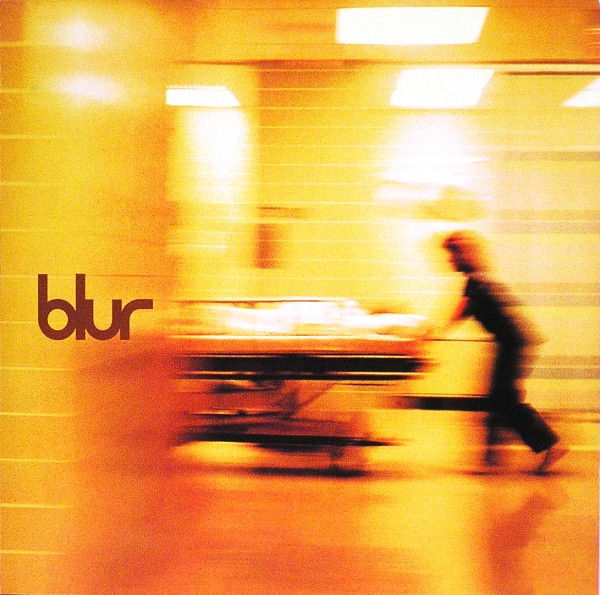
The result was the band's self-titled 5th album. EMI was a little apprehensive; we've been here before, haven't we? The drastic change in sound would alienate the fanbase, and they thought the album would flop.
How wrong they were!
‘Blur’, along with its lead single ‘Beetlebum’, reached the top of the UK charts, and the album was quickly certified platinum. ‘Beetlebum’ marked a deliberate departure from the upbeat, observational Britpop of ‘Parklife’ and ‘The Great Escape’. Its slow-burning, guitar-driven sound drew clear influence from the grunge and shoegaze movements, with Damon Albarn’s vocals conveying a sense of vulnerability and introspection.
Lyrically, the song is widely believed to deal with themes of addiction, intimacy, and the darker side of human relationships, giving Blur a more personal and emotional edge than ever before. It demonstrated that the band could evolve, embracing darker textures and more nuanced storytelling while maintaining their melodic sensibility.
‘Song 2’, in contrast, is raw, explosive, and almost cheekily aggressive. Reaching number two in the UK Singles Chart and becoming Blur’s biggest song in America, it propelled the band to a completely new audience. With its iconic “woo-hoo” chorus, distorted guitars, and relentless energy, ‘Song 2’ is a playful nod to grunge, though not entirely serious. Some see it as Blur challenging American rock on its own terms, while others interpret it as a tongue-in-cheek comment on how effortlessly they could harness the genre’s intensity. Its simplicity, loudness, and sheer fun made it an anthem, cementing Blur’s ability to reinvent themselves while still producing music that was unmistakably theirs.
‘On Your Own’ has since been described as one of the first seeds of what would become Gorillaz, a band Albarn would later form. The song combines electronic textures, processed guitars, and hypnotic rhythms with Albarn’s detached vocal delivery, creating a futuristic, slightly dystopian feel. It experiments with mood and atmosphere in ways Blur had rarely attempted before, signalling their willingness to push beyond the traditional rock band framework and foreshadowing the genre-blending experimentation that would define Albarn’s later work.
‘Death of a Party’ stands out as one of Blur’s most politically conscious moments. Set against a funky, lounge-like backdrop, the song addresses the AIDS crisis of the 1990s, social indifference, and the fragility of human connection. Its lyrics are subtle yet pointed, balancing critique with empathy, and revealing a band fully aware of the world around them. The track underscores how far Blur had come from the satirical, surface-level observations of their Britpop heyday, showing a readiness to engage with darker and more serious subject matter without losing their musical identity.
'Blur’ as an album represented a necessary reinvention. The Britpop hangover was in full flow, and the band had emerged on the other side stronger and more confident. They had shed the expectations and constraints of the previous era, embracing a sound that was experimental, energetic, and globally resonant. Pulp would undergo a similar transformation with ‘This Is Hardcore’ in 1998, while Oasis’s follow-up, ‘Be Here Now’, famously became the sound of “five men on cocaine, not giving a fuck,” as Noel Gallagher put it, illustrating just how different Blur’s reinvention had been. ‘Blur’ was proof that a band could evolve beyond the peak of a cultural movement, take risks, and still connect with both critics and fans on a grand scale.
After the success of 'Blur', the band embarked on a nine-month world tour, where they would take these new songs to the biggest audiences to date.
The band were now playing in Arenas, across the globe and in 1998 they would play at the Glastonbury Festival, headlining the Pyramid stage for the first time. Blur had arguably become the most important British band again.
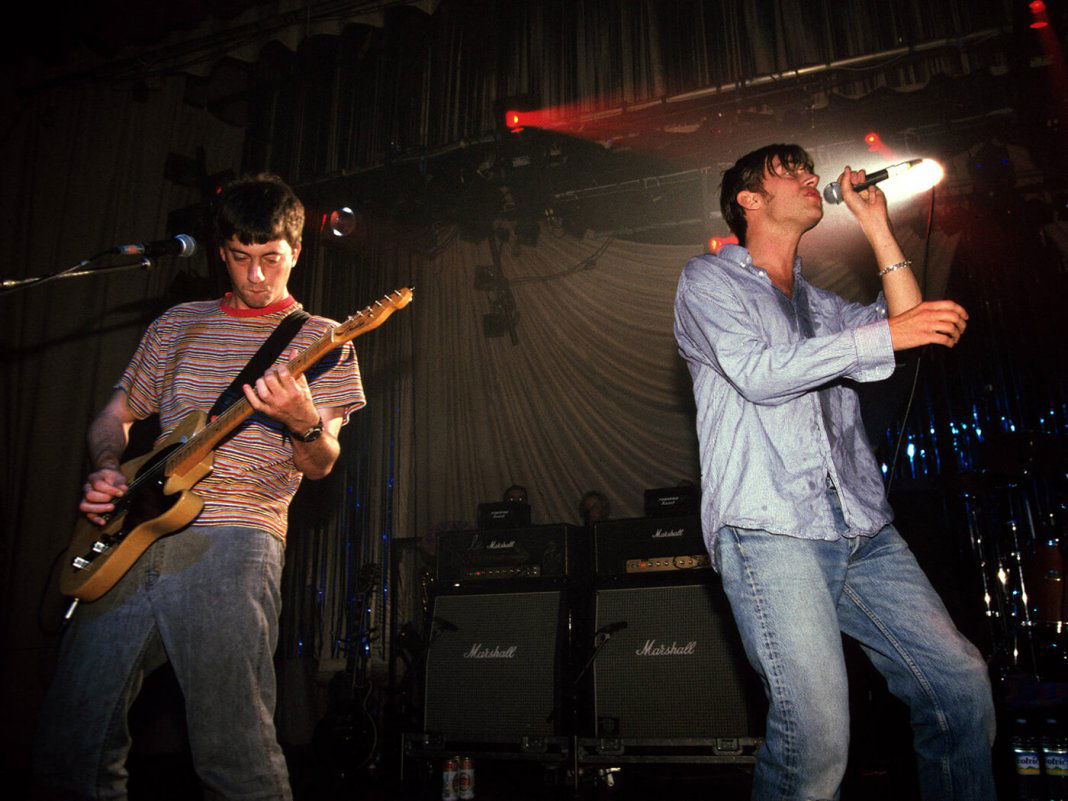
1999 saw Blur release their sixth studio album, ‘13’. It is a record that moves the band even further away from Britpop, building on the experimentation of ‘Blur’ and taking it to entirely new emotional and sonic heights. Stephen Street was out of the producer’s chair, replaced by William Orbit, whose electronic sensibilities gave the album a dreamlike, textured quality. Graham Coxon was given greater freedom to lead on guitar, allowing his eccentric and adventurous playing to shape the sound in unprecedented ways. Meanwhile, Damon Albarn was channelling personal upheaval into his lyrics, reflecting on his breakup with Elastica frontwoman Justine Frischmann and producing some of the most heartfelt, raw writing of his career.
‘Tender’ stands as one of the most beautiful pieces of British music in the 1990s. A gospel-tinged ballad with soaring backing vocals, it balances melancholy with hope. Albarn’s voice carries vulnerability and warmth as he pleads for emotional connection and forgiveness, making it feel deeply personal and confessional. The song’s rich instrumentation, including piano, organ, subtle strings, and spacious percussion, creates a lush, almost cinematic soundscape that perfectly complements its spiritual, uplifting quality. Its chorus, with its repeated call of "Oh my baby", is intimate and universal, and would become one of Blur's biggest anthems.
The song's lyric, by Damon Albarn and Graham Coxon, describes the break-up between Albarn and Justine Frischmann, then the lead singer of Britpop band Elastica. Frischmann told British newspaper The Observer that she cried the first time she heard the song, then felt embarrassed and angered before she calmed down.
Alex James said of the song, "I remember walking into the studio feeling like shit, for reasons I won't go into, and hearing the vocal to 'Tender' and feeling better again. That's the anodyne quality of some music, assuaging your feelings of guilt and horror. Fortunately, we had it nailed early on. And that makes a really big difference when you've got an obvious global number one. That takes the pressure off."
‘No Distance Left to Run’ is the heart-wrenching centrepiece of the album. Written in the aftermath of Albarn’s breakup with Frischmann, it is an intimate meditation on loss and closure. Albarn has said of the song: “It upsets me, that song. It upset me singing it. Doing that vocal upset me greatly. To sing that lyric, I really had to accept that that was the end of something in my life. It’s amazing when you do have the guts to do that with your work because it doesn’t half help you.” The restrained arrangement, soft guitar lines, and quiet backing vocals create a fragile, confessional atmosphere, making it one of Blur’s most emotionally direct songs.
‘Coffee & TV’ is unique in the Blur catalogue, sung by Graham Coxon rather than Albarn. Its jangly guitar riffs and melodic hooks give it the most immediately recognisable “classic Blur” sound on the album, yet it is deeply personal. The lyrics follow Coxon’s struggles with alcoholism and his journey toward recovery, blending wit, melancholy, and triumph.
The accompanying music video, featuring a walking milk carton in search of Coxon, added a whimsical visual narrative that contrasted with the song’s emotional honesty, highlighting the band’s willingness to combine humour with heartfelt storytelling.
Other tracks on '13' further emphasise the album’s experimental and intimate nature. ‘Battle’ delves into dissonance and tension, reflecting inner turmoil, while ‘Caramel’ explores obsession and the addictive nature of desire through moody, hypnotic instrumentation. ‘1992’ is a reflective track looking back at the height of Britpop with nostalgia and a hint of cynicism, while ‘Bugman’ delivers angular, abrasive guitar textures, showcasing Coxon’s fearless experimentation. Each song contributes to an overarching sense of fragmentation, introspection, and emotional rawness that makes the album feel like a document of a band in transition.
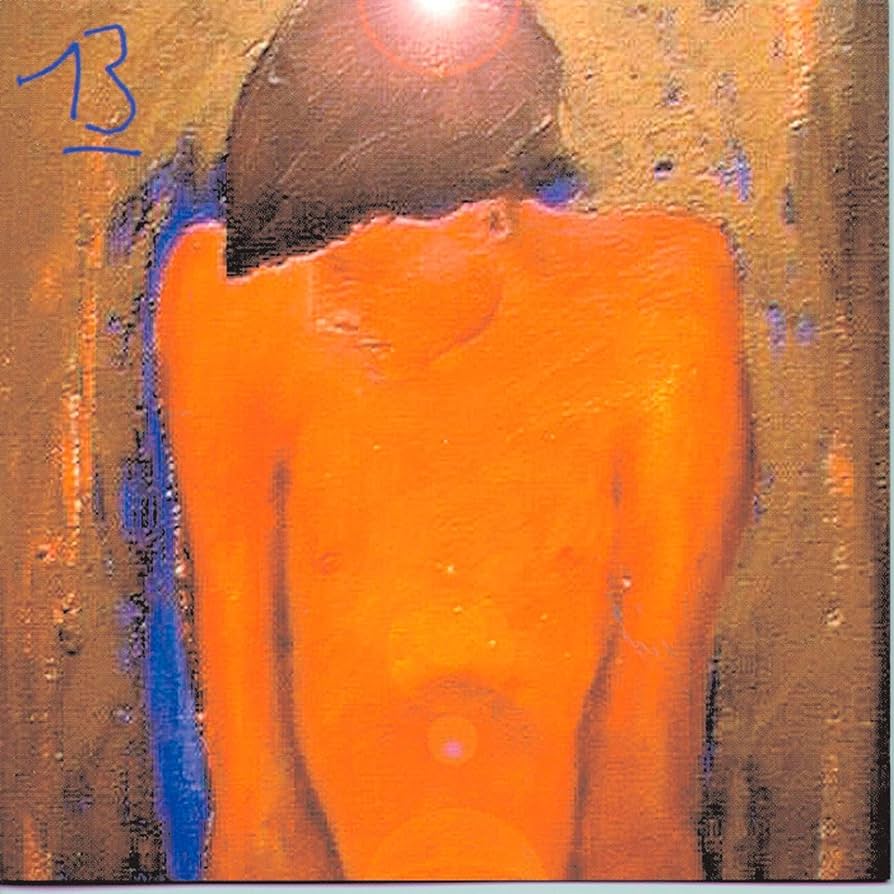
Although 13 is widely regarded as one of Blur’s finest records, it was also the start of the end of the classic lineup. Albarn began sharing a flat with artist Jamie Hewlett, whom he had met through Coxon, and was increasingly branching out musically. Reports surfaced that he and Hewlett were secretly working on a new project, which would later become Gorillaz.
Drummer Dave Rowntree reflected on the recording sessions: “Things were starting to fall apart between the four of us. It was quite a sad process making it. People were not turning up to the sessions, or turning up drunk, being abusive and storming off.” Despite the internal struggles, 13 remains a bold, emotionally potent album, capturing Blur at a moment of transformation, both musically and personally.
Blur would tour ‘13’ in late 1999 and throughout 2000, taking the record around the world and performing to enthusiastic audiences across Europe, North America, and Japan. The tour showcased the album’s emotional depth and experimental sound, with Albarn and Coxon both pushing the live arrangements to reflect the layered textures of the studio recordings. Yet, despite the energy of the performances, it became clear that the band members were starting to drift in different directions.
After the tour concluded, Damon Albarn threw himself into a new creative venture, forming the virtual band Gorillaz with artist Jamie Hewlett. The project allowed him to experiment with hip-hop, electronic, and world music influences, giving him a fresh outlet to explore themes and sounds that didn’t fit within Blur’s framework.
Meanwhile, Graham Coxon focused on his solo career, releasing two albums that highlighted his distinctive guitar work, songwriting, and more personal, introspective style.
During this period, the other members of the band also pursued individual interests, and Blur remained largely on hiatus, with occasional discussions about the future. It wouldn’t be until 2001 that the band would reconvene, bringing renewed focus and energy to the studio. This period of separation, though challenging, ultimately allowed each member to grow as musicians and creative artists, setting the stage for Blur’s next phase and the eventual reinvention of their sound.
Out of Time- The End
Recording for the next Blur record would begin at the back end of 2001, in London, but it would take until June 2002 for the band to make real progress. Blur had moved the recording to Morocco and then back to the UK. However, during this time, they would suffer a huge blow.
Coxon left the band; he was suffering from his alcoholism at the time and had been admitted into the Priory Hospital just as the band had begun to record the album. He would rejoin the band for a few days, but things were not the same. The band did not think things were going well with him in the room. So Coxon packed his bag and left.
He has since described how he was feeling at the time. "I had a breakthrough, I think my life just became calmer. I gave up drinking. My priorities changed as I had a young daughter. The group didn't want me to record for the 'Think Tank album', so I took it as a sign to leave." Before he left, he did give us one last contribution, the final song on 'Think Tank', 'Battery in Your Leg'. Albarn has since stated too, that 'Sweet Song', another song on the album, was inspired by Coxon, and was written after Damon looked at a photograph of him and Coxon.
Yet the majority of this record sees the band distance themselves from Coxon's guitar playing. Influenced by electronic, dance, hip-hop, jazz and World Music. Even the producers the band used for this record see them take a different approach. The album's primary producer was Ben Hillier, with additional production by Norman Cook (Fatboy Slim) and William Orbit.
It is a very different record from anything the band had done before, much more electronic and loop-based. Almost entirely written by Albarn, 'Think Tank' placed more emphasis on lush backing vocals, simple acoustic guitar, drums, bass guitar, and a variety of other instruments. This was the first time in two albums that Albarn was given total creative freedom; the previous two albums, 'Blur' and '13', had been led entirely by Coxon; this time, Albarn was definitely at the helm.
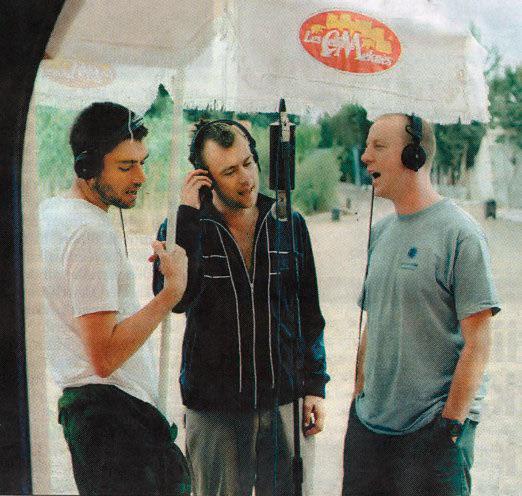
'Think Tank' was still a successful record for the band; it hit the top spot in the UK and was nominated for the best album at the 2004 Brit Awards. It saw the band again embrace a new direction, having lost one of the most important parts of the jigsaw.
Blur toured the record in 2003 and replaced Coxon with Simon Tong, the former Verve guitarist. Not a bad replacement. However, he is not quite Graham Coxon. It did allow fans to see Blur play these new songs live.
In 2005, XFM News reported that Blur would record an EP, and denied that they would hire a replacement guitarist for Coxon. There were also some aborted recordings made in 2005. Overall, the band kept a low profile and did no studio or touring work as a three-piece. Coxon, too, was hesitant to join Blur again. However, things were soon about to change!
Adverts Inside My Dreams- Reunion & The Magic Whip
In 2005, Coxon was reluctant to rejoin his bandmates; however, in 2007, the band reconvened and announced they planned to record in the Summer. Autumn of that year. In October, they met up for an "enjoyable lunch", but put the new music rumours to bed: "There were no other music plans for Blur".
In December 2008, Blur announced a huge show in London's Hyde Park for the 3rd of July 2009, a few days later a second date was added,d the 2nd of July 2009. Along with a series of shows in the run-up to these huge dates. The band's shows varied in size on this tour from the East Anglican Railway Museum (where the band played their first-ever gig) to Goldsmiths College (where the band met), all the way through to the Manchester Arena.
Before the tour started, Blur reunited at the 2009 NME Awards, all four of them, Alex James and Dave Rowntree presented Pete Doherty with the award for Best Solo Artist; meanwhile, Damon and Graham took to the stage for the first time since 2000 to play an acoustic version of 1994's 'This is a Low'
In June 2009, the band didn't think two huge shows in 2009 were enough, so they took to the Pyramid Stage at Glastonbury on Sunday, 28th June 2009, to play Glastonbury performances for the ages. It is still ranked as one of the very best headline slots ever seen at Worthy Farm. Playing a joyous set for the ages. A set about friendship – and the truly heartwarming sight of two best friends throwing aside their differences and starting afresh. Remember the bad blood of 'Think Tank' that was done. Blur were back and arguably better than ever!
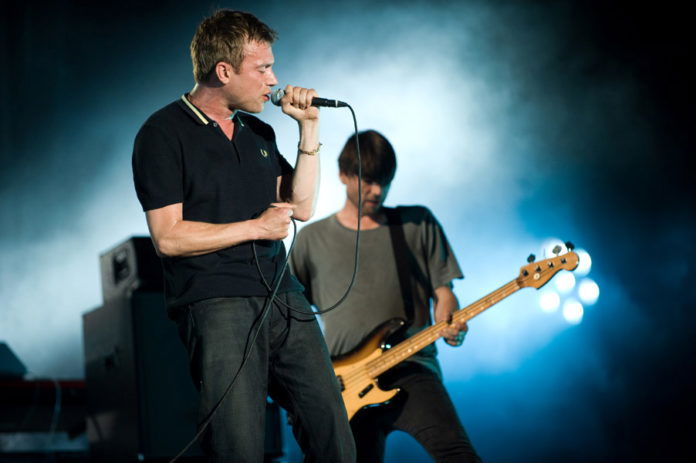
Hyde Park's two shows saw Blur ride off the crest of the wave Glastonbury had given them. Playing two of their best-ever gigs, playing all of the classics but also digging out some of the hidden gems in their discography and giving them an outing in front of the 50,000-strong crowd. Oily Water, ‘Death Of A Party’ and ‘Trimm Trabb' all gave a new lease of life, and the crowd lapped it up. Mixing these in with the Blur faithful's favourites was a master stroke.
Blur also played 'Out of Time' at these reunion dates, a song from the band's last album, ' Think Tank'; however, this time around, there was something different. Something not present on the studio versions. A certain Mr Graham Coxon was playing the guitar, and these live versions acted as a metaphor for the band rekindling their friendship with each other.
Albarn paid tribute to the people behind the scenes who he said had “bullied” Blur into getting back in touch with each other since going on hiatus after the 2003 album ‘Think Tank’.
“I just wanna say thank you to everyone who sort of bullied us and persisted in getting us to do this,” he said, adding to the audience, “And thank you too!”
Blur needed to do this for themselves more than anything. However, they were not finished yet. After headlining summer festivals, including T in the Park and Oxygen. The band laid down their instruments for a little while.
At the time, no further plans had been discussed. Rekindling the friendships had been the main instigator for these shows, and it had worked.
In January 2010, 'No Distance Left to Run', a documentary about the band, was released in cinemas and a month later on DVD. It details the history of the band up until this point, as well as showing behind-the-scenes footage of the 2009 summer tour. Including backstage videos of the huge Hyde Park gigs, and candid moments of all four members together. 2010 also saw Blur release new music, for the first time in 7 years, the band released 'Fool's Day' for Record Store Day, and it was initially limited to 1000 physical copies.
In February 2012, Blur were awarded the Outstanding Contribution to Music award at the Brit Awards, a recognition of their decades-long impact on British music and culture. Later that month, Albarn and Coxon reunited on stage to premiere a new track live, ‘Under the Westway’, followed by another new song, ‘The Puritan’, giving fans hope for a full new album. However, despite this excitement, the recording was ultimately put on hold. Both singles were released independently, yet no album materialised, leaving these tracks as rare glimpses of new material from the band at the time
‘Under the Westway’ is one of the most poignant and reflective songs in Blur’s later catalogue. Premiered live by Damon Albarn and Graham Coxon in February 2012, the track marked a rare moment of reunion for the band and hinted at the depth of emotion they could still convey decades into their career. Musically, the song is stripped-back and atmospheric, driven primarily by piano and subtle electronic textures, creating a spacious, almost cinematic backdrop for Albarn’s voice. Unlike much of Blur’s Britpop-era material, it eschews upbeat hooks and playful guitar riffs, instead embracing a contemplative, melancholic mood.
That August, Blur headlined a monumental show at Hyde Park as part of the 2012 Summer Olympics closing ceremony. The performance was a celebration not only of the Games but of British culture and music history, drawing a vast crowd and millions of viewers worldwide. It was a carefully curated set that spanned their career, balancing classic hits with the live debut of ‘Under the Westway’..

In 2013, Blur continued their return to live performance with festival appearances across Europe and the United States. They played at Rock Werchter in Belgium, several dates on the Primavera Sound Festival in Spain and Portugal, and even the Coachella Valley Music and Arts Festival in the U.S. Considering the band had publicly stated they were finished in 2009, this sudden flurry of activity highlighted not only the enduring appeal of Blur but also their willingness to engage with new and international audiences on a grand scale.
Reflecting on the Hyde Park show, Albarn emphasised that it was never about money: “We will take home just £1 each for last night’s Hyde Park show.” The event was about celebrating home, history, and the Olympic moment itself. It was a special show for both the band and the audience, a chance to reconnect, share new material, and honour their legacy in front of a global stage.
In 2015, Blur fans finally got what they had been asking for: a new album. 'The Magic Whip' was written and conceived in Hong Kong, following a few cancelled dates in Japan, and it marked a long-awaited return for the band after a 12-year hiatus. It was also a reunion in the truest sense: Graham Coxon was back, having been largely absent from the band’s previous record, and Stephen Street returned to the producer’s chair, bringing a sense of continuity and polish to the project.
The making of the album was unusual and somewhat fragmented. Although the songs were written and initially recorded together in Hong Kong, it was Coxon who took the tracks to Street while Albarn was on tour, allowing James and Rowntree to contribute parts in secret recording sessions. The music was eventually presented to Albarn, and the rest is history.
In May 2013, Blur were set to play Japan's Tokyo Rocks Music festival. However, the entire festival was cancelled for unknown reasons, leaving the band stranded in Hong Kong for an extra five days. In an attempt to distract themselves, they worked on new material in Avon Studios, as announced by lead singer Damon Albarn during the gig at AsiaWorld–Expo, Chek Lap Kok. Albarn later stated he was unsure whether the resulting music would ever be released. In July 2014, he commented, "There are about 15 songs...the annoying thing is, if I'd been able to write the lyrics there and then about being there, we'd have finished the record. But sometimes, if you can't do it all at once, it dissipates, really, and I don't know what I'd sing about now with that record. There's some great tunes on there, but it may just be one of those records that never comes out."
The record is full of classic Blur moments; 'Lonesome Street' sits alongside classic Life trilogy-era Blur. Though Damon Albarn’s cheeky chappy delivery and Graham Coxon’s bouncing fretwork are familiar, ‘Lonesome Street’ is no cheap slice of nostalgia – convoluted and ever-shifting, it’s actually a pretty strange beast beneath its chipper exterior.
'Go Out', the album's lead single, takes into consideration all eras of Blur; the chorus is pure Britpop, and Coxon's guitar work feels like he's picked it up where he'd left it in 1997. 'Thought I Was A Spaceman' is one of the most underrated and complex Blur songs. It takes Albarn's fondness for character studies and portrays it through a dark and unsettling lens. “I thought I was a spaceman digging out my heart/ In some distant sand dunes,” mourns Damon, in full-on melancholy mode over processed drum machine beats and low-key washes of guitar. As the track builds, the rest of the band joins him, adding layers of oriental-sounding percussion, warped tremolo-heavy guitar parts and laconic basslines – a dystopian soundtrack of another world.
'My Terocata Heart' lays out Albarn and Coxon's yin and yang relationship bare for all to see. “We were more like brothers/ But that was years ago,” laments Damon. “I’m running out of open roads to you”.
A triumphant comeback for Blur, they would go on to tour the album in 2015, playing all around the world in huge arenas, with the last date being the 29th November 2015.
Blur then went back on another hiatus. It seemed like the end. They had come back, played some huge shows, rekindled the friendship and even released new music. In the form of new singles and even a new album. Would Blur do any more?
Standing in the Back Row This Ones For You- The Ballad of Darren & The Future...
It took Blur 7 years to make the next announcement. Yes, they had briefly reunited in 2019 at an Africa Express event organised by Albarn. However, it wasn't until 2022 that they would announce something. On 14th November 2022, Blur announced a huge Wembley Stadium date for Saturday 8 July 2023. Blur's biggest UK gig to date.
Albarn said, "We really love playing these songs and thought it's about time we did it again”. Coxon also stated, "I'm really looking forward to playing with my Blur brothers again and revisiting all those great songs. Blur live shows are always amazing for me: a nice guitar and an amp turned right up and loads of smiling faces.”

On November 18th, Blur announced a second date at Wembley for Sunday, 9 July 2023. In April, Blur would announce further dates in Europe and Asia. Performing in Madrid, Porto, Dublin, Amsterdam, Normandy, London, as well as a string of huge European Festivals. Before jetting off to Japan, and then ending the tour in South America, with some November dates.
Blur announced four UK warm-up dates for May 2023 to get them ready for these huge shows. Blur played at Colchester Arts Centre on May 19, Eastbourne Winter Gardens on May 21, and Wolverhampton on May 26 to perform at The Halls, before finally wrapping up their warm-up gigs at Newcastle's O2 City Hall on May 28.
These announcements were huge for fans. A new generation of Blur lovers. My friends, I thought we might never see the band, and thanks to this tour, we got to see them, some of us even went twice. I also got an amazing holiday to Amsterdam, so cheers lads, (sorry Lauren).
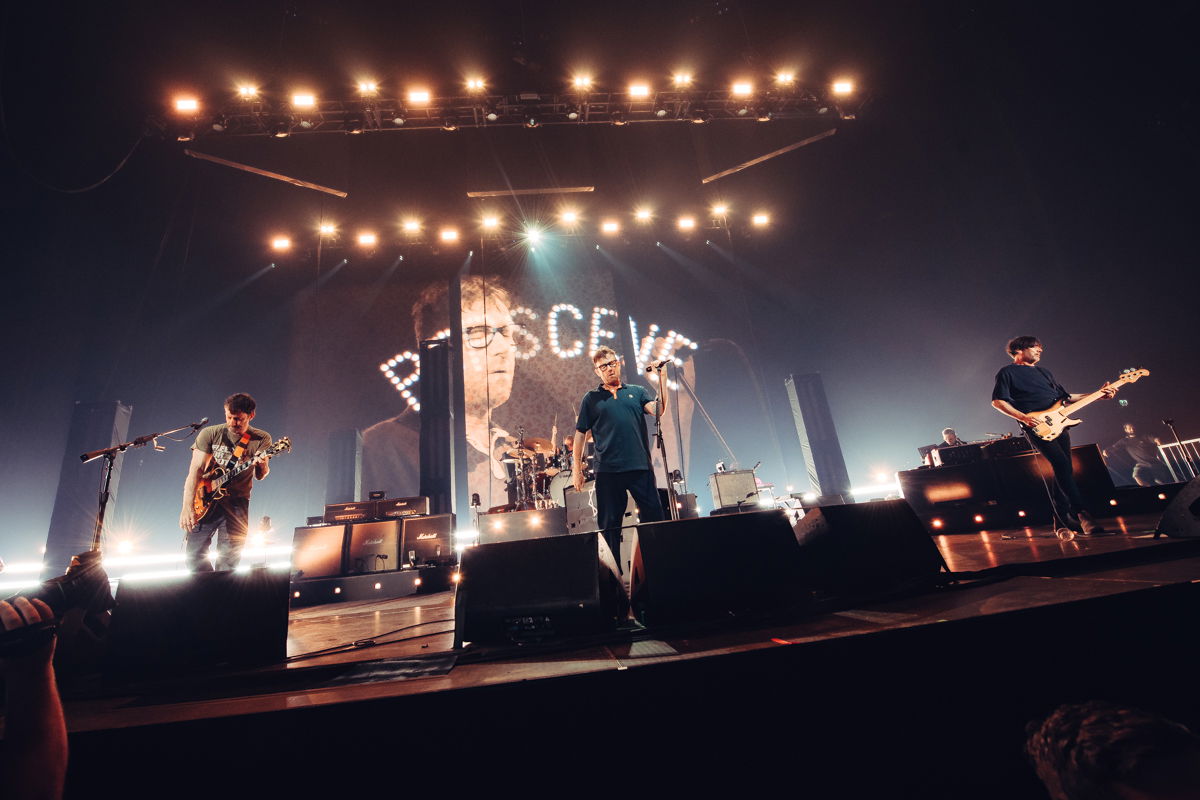
If April 2023 was good for Blur fans, May was even better, as we already knew about the warm-up gigs. But on May 18th, Blur announced new music, the first single from their upcoming ninth studio album, 'The Ballad of Darren'.
'The Narcissist' was an exceptional return to form for the band, a song the band have described as 'an aftershock, reflection and comment on where we find ourselves now”, looking back at the friends he has lost: Bobby Womack, Tony Allen and late tour manager, Craig Duffy and his wife.' It is not only one of the best songs of this year, but it is one of the best Blur songs ever. A snapshot of their whole career. In terms of a comeback single, it doesn't feel like one.
It has gone straight in alongside the very best songs the band have ever released. It has to be. A truly beautiful and breathtaking piece of guitar music.
Blur would play the huge summer shows before the release of 'The Ballad of Darren' and it was a privilege to watch a band that had the discography Blur had, but also were super excited for the world to hear this new record. Watching them in Amsterdam was something I'll never forget. A group that has been through a lot together and apart, but a group that feels at home and comfortable on that stage and in each other's company.
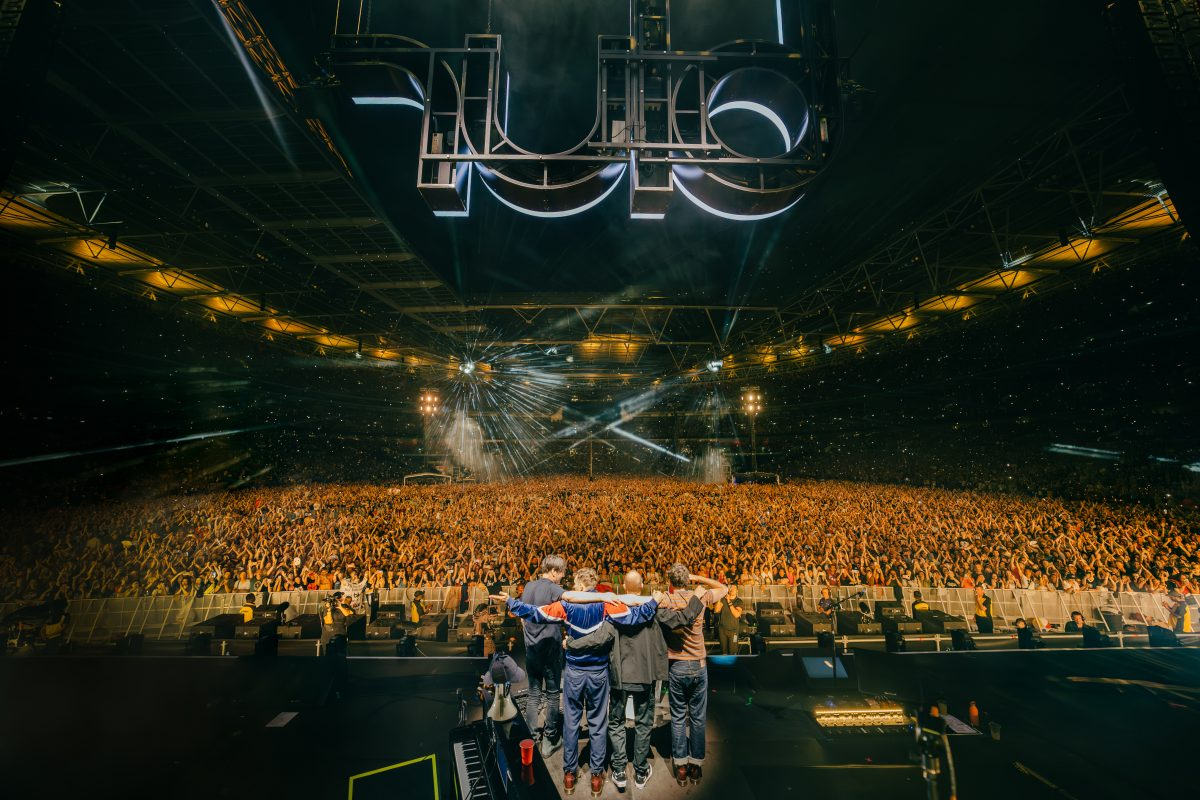
The magic was there, both on stage, and I can happily say in the studio. 'The Ballad of Darren' is some of the band's best work. It is memorable and touching, full of emotion. You can feel what the band are going through with each line sung by a fragile front man, and each note played by his three best friends. Whatever they are going through, they are facing it together. This sense of friendship has strengthened over the years. As has the relationship with the Blur faithful.
“I gave a lot of heart, so did you / Standing in the back row, this one’s for you”, Albarn sings on the album's final song, 'The Heights.'
'The Ballad of Darren' was born out of the gang getting back together, and the four members experiencing the friends they have lost. This album is for the people who have been there for Blur; even in its title, Blur has tried to appeal to their generation, those who have been on this journey with them. Darren refers to Blur’s security guard and resident, every man Darren “Smoggy” Evans. But the title is more than just a nod to an old friend, Darren is a name that is synonymous with the generation Damon, Graham, Alex and Dave grew up in, and that name seemed to lose favour with the public, in fact it dropped out of the Top 100 Boys Names in 1994 just as Blur began to win favour with the British public. There's something quite beautiful in that.
Is that where the Blur story ends? I really hope not.

For Archie, Dylan and Lauren x